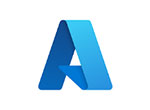eAssessment dynamics: weaving human judgement into your tech ecosystem
Using artificial intelligence (AI) for marking assessments is something many organisations and awarding bodies are either already doing, or are strongly considering. But for high-stakes assessments, is this technology alone enough?
As we've discussed in previous blogs on ethics and reputational risk, while AI offers unparalleled capabilities in data analysis and automation, it's not without its limitations, such as the inability to understand context, potential for algorithmic bias, and the lack of emotional intelligence. And because of this, there is a clear need for a digital assessment platform that enables you to build in a post-assessment review by a human proctor. Not only will this enrich the quality and fairness of your assessments, but will also significantly bolster your organisation's reputation and standing. You also need a platform that will integrate effortlessly with your existing tech stack, and in this blog, we’ll discuss the essential aspects to consider when choosing a digital eAssessment platform.
Posted 26 September 2023
Seamless integration
Planning for this integration from the outset is key, since navigating the maze of compatibility issues and data migration is a distraction nobody wants. Doing the thinking up front will help you sidestep frustrating operational issues and enhance the user experience for your learners. Adhering to widely-accepted standards, like SCORM or xAPI, can facilitate an even smoother integration. This not only saves time but also ensures that your eAssessment platform can work in tandem with other tools that abide by the same standards.
Consider a situation where your LMS triggers a specific learning pathway based on the outcomes of an assessment. In this case, you would want to know that your eAssessment platform would communicate automatically with the LMS to activate the appropriate pathway, without you having to manually intervene.

AI-driven eProctoring
In today's remote working and learning environment, AI-driven eProctoring has become increasingly essential. The AI can help flag up any unusual activity, highlighting this as potential cheating, which can then be reviewed by a human proctor with a greater awareness of the subtle nuances of the situation.
For example, the AI may flag a candidate who frequently looked away from the screen. The human proctor can then verify whether the candidate was actually checking the time, or perhaps referencing allowed material, rather than engaging in dishonest behavior.

Adaptability in eAssessment
Whether you're administering multiple-choice tests, long-form answers, or other question types, the platform should be adaptable. This adaptability ensures that the assessments remain relevant and engaging, particularly as curricula evolve over time.
For example, in a financial risk management exam, the platform could use case studies with a mixture of multiple-choice questions, to gauge understanding of risk assessment theories, along with short-answer questions, where candidates must calculate risk scenarios or interpret financial data. This diverse question format allows for a comprehensive evaluation of both theoretical knowledge and applied skills, showcasing the platform's adaptability.

Formative and summative assessments
And of course, your chosen platform should proficiently support both formative assessments, for ongoing developmental feedback, and summative assessments, for end-of-course evaluations or certifications.
A platform that can leverage real-time analytics to enrich formative feedback, as well as integrate robust human proctoring into high-stakes summative evaluations, enhances the effectiveness and credibility of the entire assessment process.

eNetAssess: a holistic approach to eAssessment
Navigating the multifaceted world of eAssessment requires a platform that can meet a broad array of needs. eNetAssess has been engineered with this in mind. Its design focuses on ease of integration, offering compatibility with existing educational or business infrastructures, thus avoiding common pitfalls in tech adoption.
eNetAssess has the capacity to support diverse question formats, presented in secure multi-device delivery, both on and off-line, lending itself to a range of curricular needs and updates. Of particular note is its capability to administer both formative and summative assessments, adding an extra layer of utility for various educational objectives. And one of the platform's strong suits is its comprehensive administrative feature set that accommodates question creation, online marking, verification, eProctoring and observational assessments, as well as comprehensive statistical reporting. These capabilities broaden the spectrum of evaluation techniques that can be employed, providing a more rounded assessment environment.

Recent Posts
Is your work changing, or just your tools? A question for the modern workforceWhat is competency? And why it matters in the workplace
Bridging the integrity gap: A proactive approach with eNetEnterprise
Proving Learning Works: Trends Driving Workplace Training in 2025
Creating assessment questions with iQ, part of eNetAssess – Frequently Asked Questions












